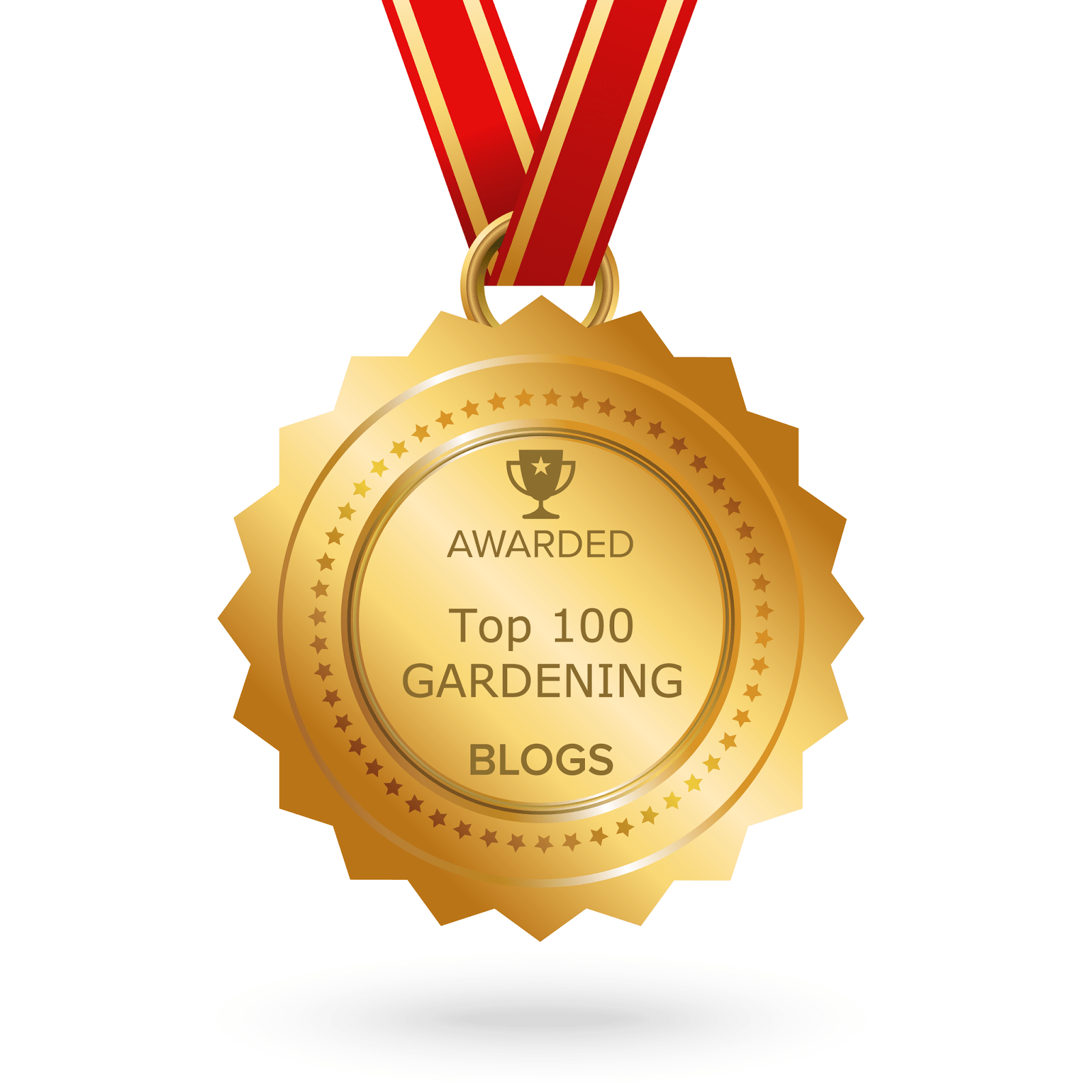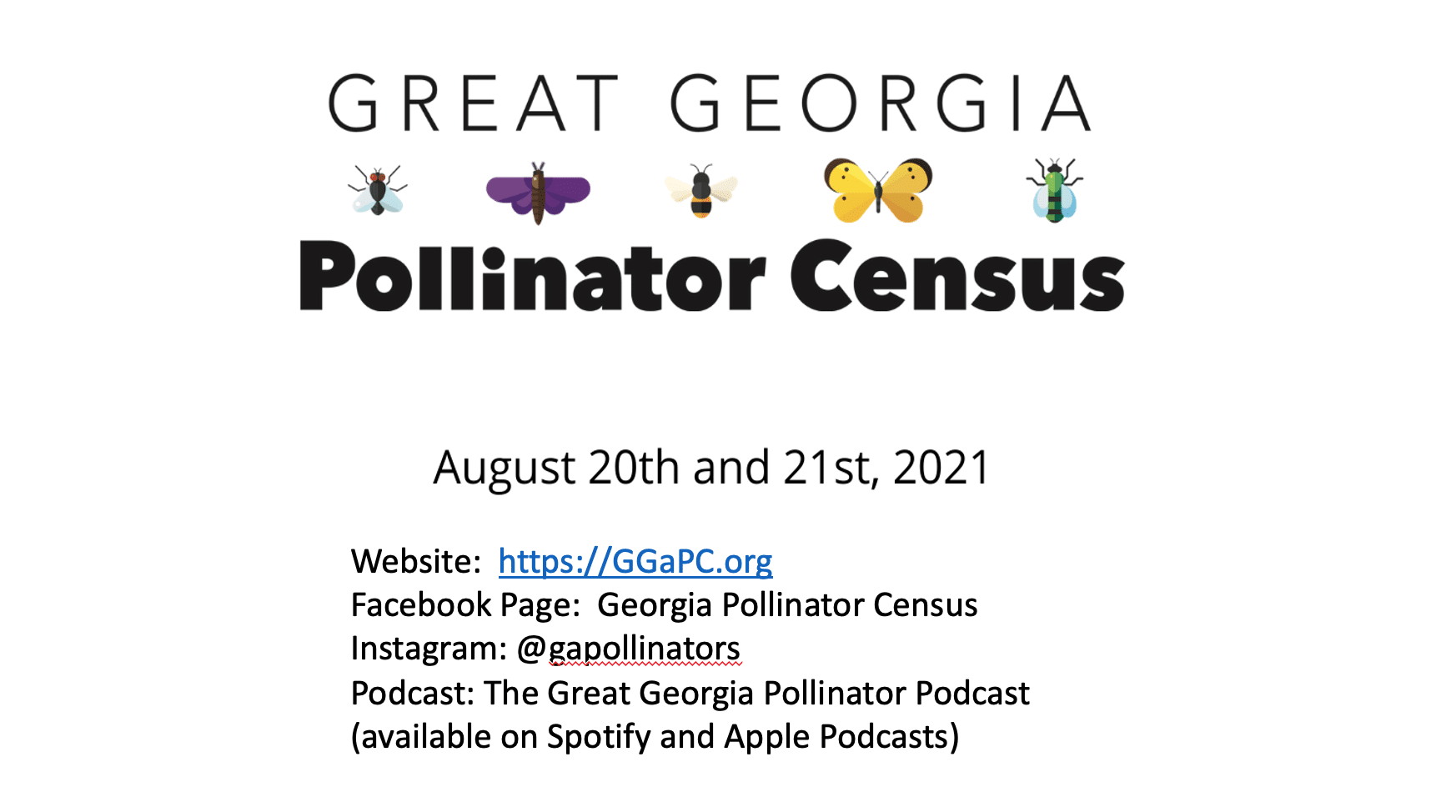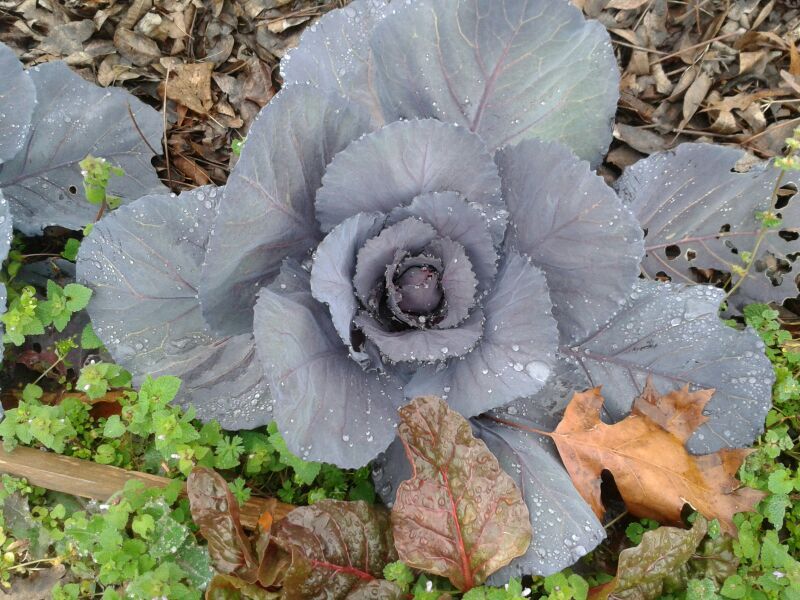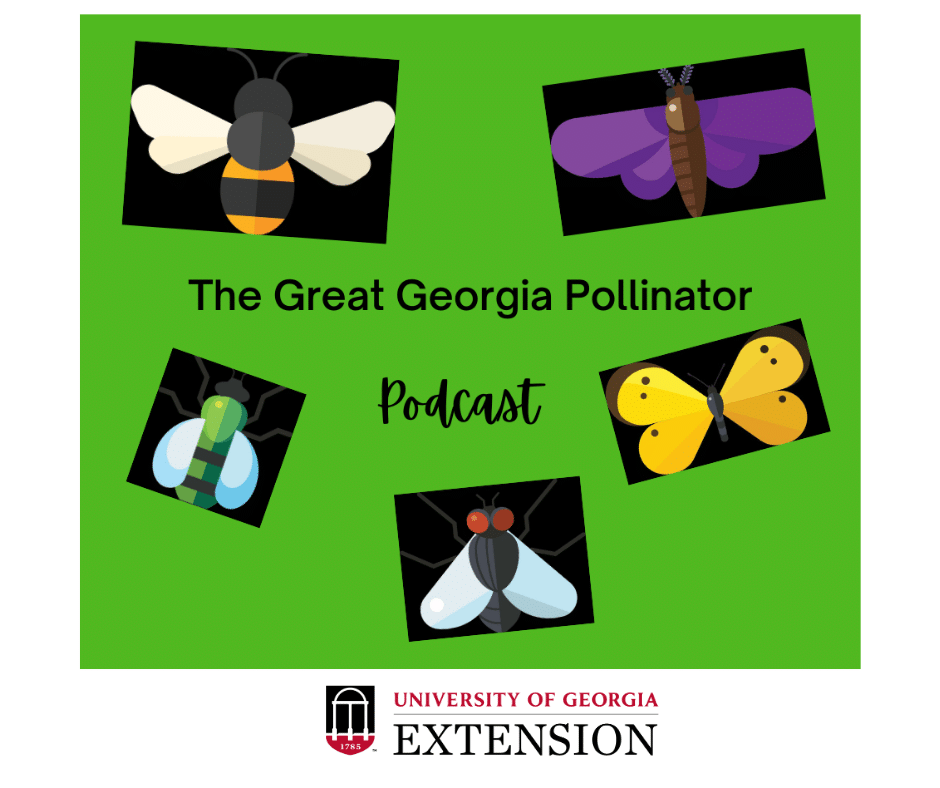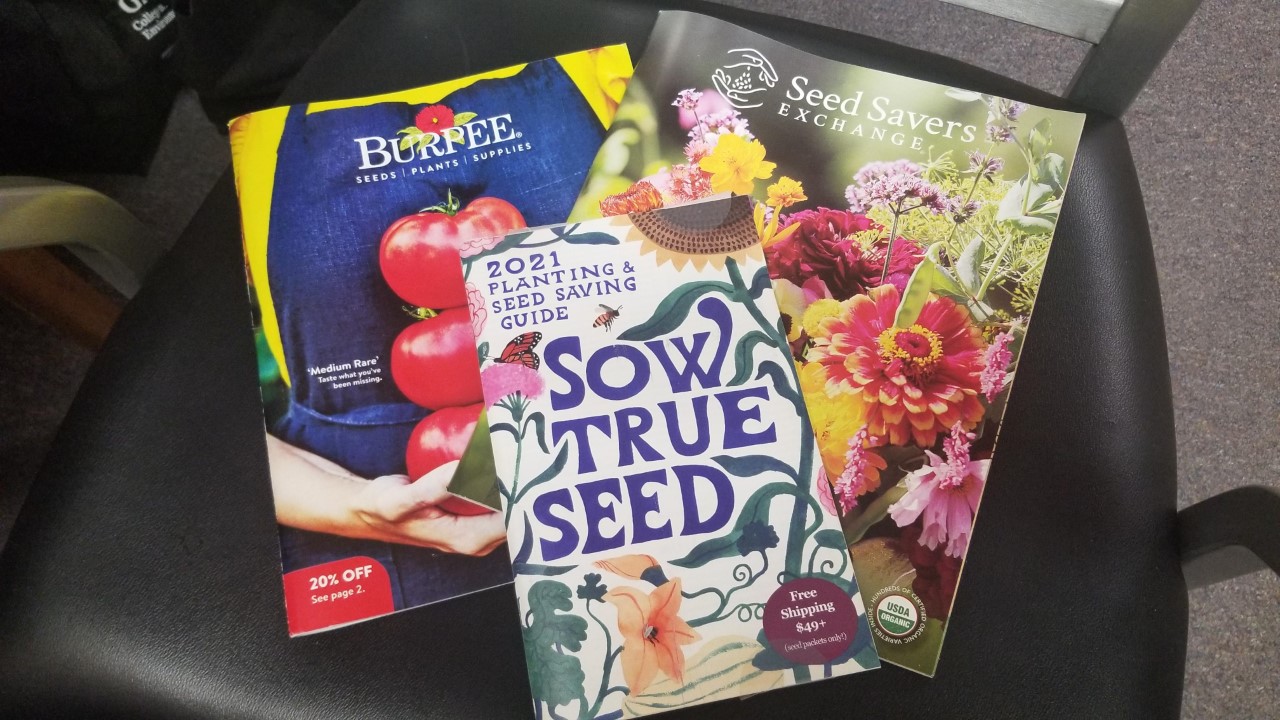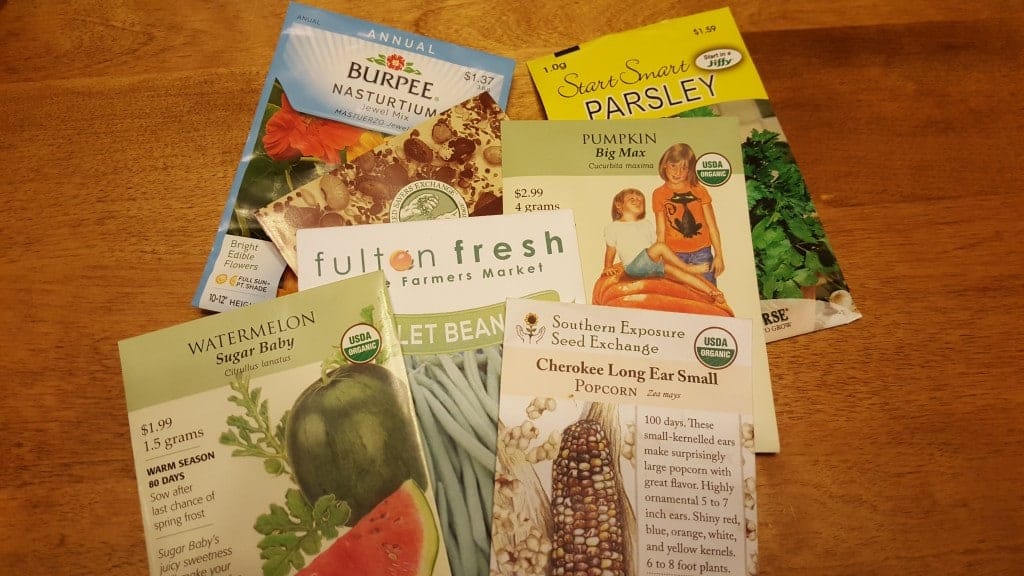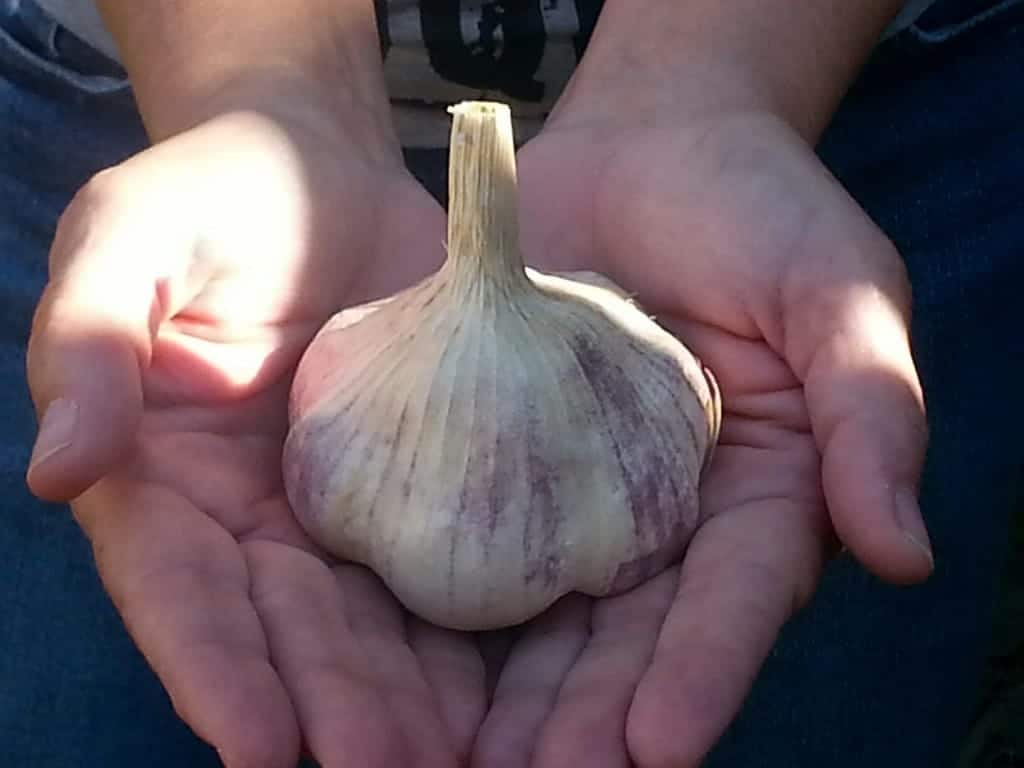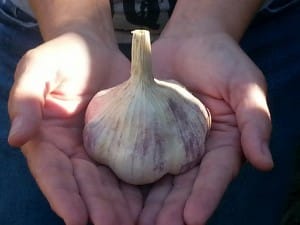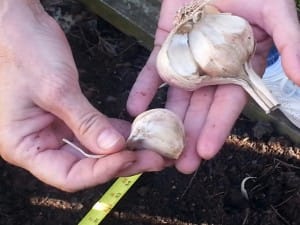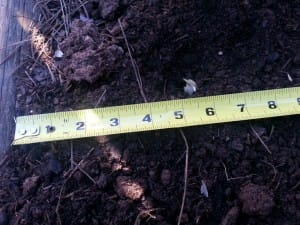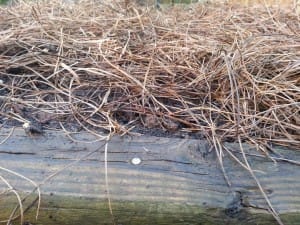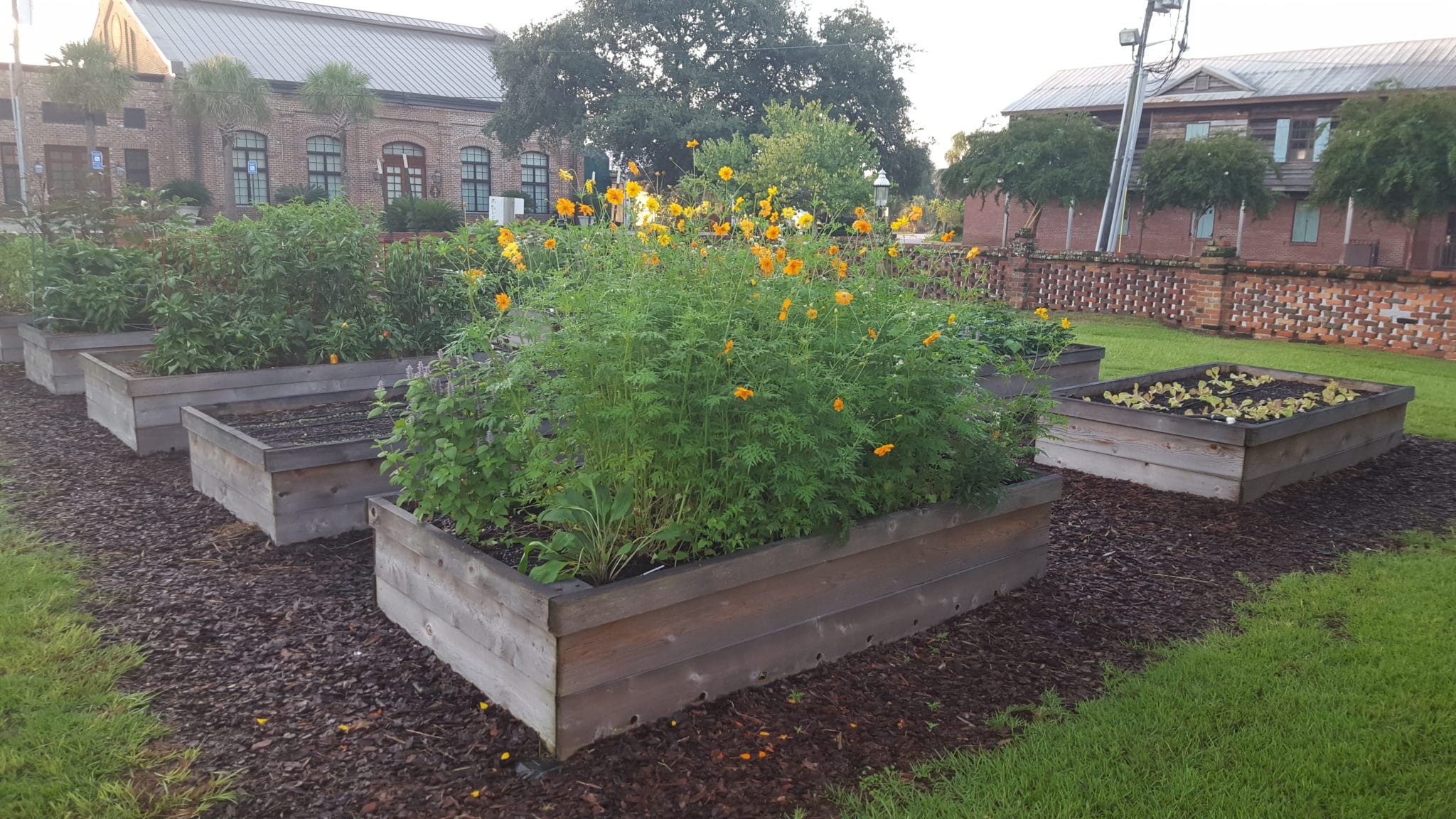
Helping Community and School Gardeners Succeed!
This gardening blog is put together by Becky Griffin, Extension Community and School Garden Coordinator. It is designed to help community and school gardeners succeed by connecting them to UGA Extension and other research-based resources. Here you will also find information about programs designed to improve pollinator health in the garden.

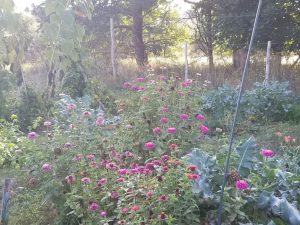
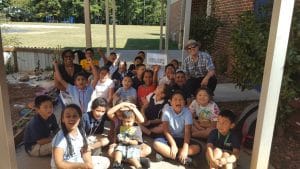
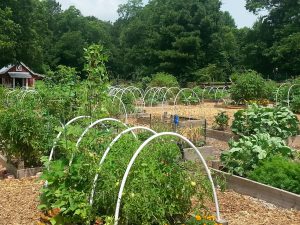
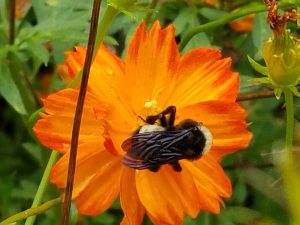
Spinach to Win It – 2022 Farm to School Campaign
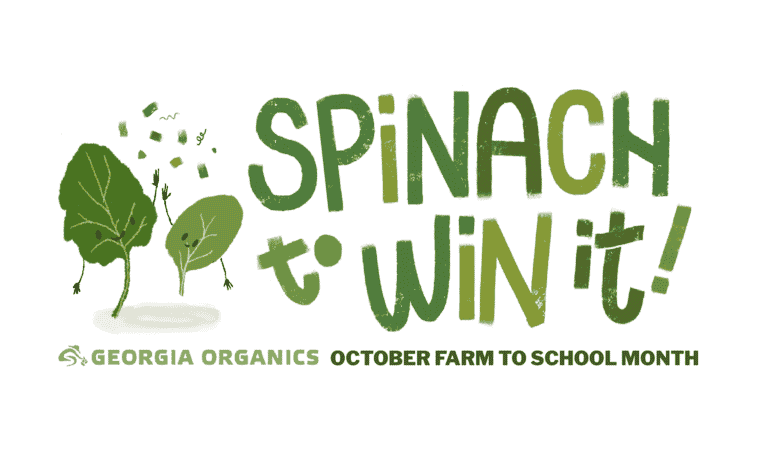
The 2022 October is Farm to School Month campaign Spinach to Win it is now live, meaning folks can start signing up to participate! Spinach to Win It is a state-wide celebration to get kids eating, growing, and participating in Spinach-themed activities. University of Georgia Extension is a proud partner of the Farm to School Alliance.
To participate in Spinach to Win it at your school, home, early care center, or in your community, visit bit.ly/spinachtowinit and sign up. Participants will receive free electronic resources to help plan and implement activities. Resources include standards-based lesson plans, fact sheets, recipes, and more.
The first 300 people to sign-up will have the option to receive a free packet of spinach seeds, washable spinach tattoos, and a Georgia Planting and Harvest Calendar for school gardens.
Share your Spinach to Win it pictures and activities on social media with #spinachtowinit. Each week during October, anyone who uses this hashtag will be entered to win a prize and at the end of the month there will be a grand prize winner.
Questions? Visit https://farmtoschool.georgiaorganics.org/frequently-asked-questions or email kimberlykoogler@georgiaorganics.org. If you have questions about growing spinach in your school garden, contact your local UGA Extension Agent.

Is the 3rd Annual Great Georgia Pollinator Census on Your Calendar?
The 3rd Annual Great Georgia Pollinator Census will be Friday, August 20th and Saturday, August 21st, 2021. This event brings citizens scientists from across Georgia together for insect education and conservation. Are those dates on your calendar? Won’t you join us?
Why Count Insects?
Understanding pollinators and other beneficial insects is imperative to Georgia’s ecosystem and our economics. A 2014 economic impact study by the University of Georgia determined that the annual value of pollination to our state is over $360 million. Any home gardener who has tried to grow watermelon, squash or cucumbers knows that if there are no pollinators there are no watermelons, squash or cucumbers.
Learning what pollinators need, their habitat, is an important part of this project. By providing a varied flower garden with nesting materials such as undisturbed ground, spent flower stems and leaf litter not only provides for pollinators but other beneficial insects as well. These beneficials can help a home garden with some of the pest insect problems.
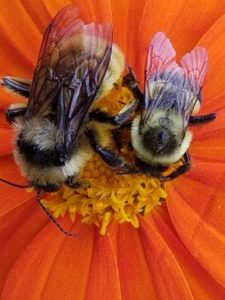
How Can You Participate?
- Learn about creating a sustainable pollinator habitat by being a part of your local UGA Extension office programming.
- Create a small pollinator garden or build the pollinator garden of your dreams (the bees will thank you!). We have the resources to help.
- Join our Georgia Pollinator Census Facebook group to share ideas and to learn insect identification.
- Check the project website, https://GGaPC.org, for information on exactly how to count insects for the Census.
- Plan to attend one of the events listed on the website to learn even more about pollinators.
- Count insects on August 2oth and/or 21st.
- Upload your counts to the website.
- Know that you have made a real difference in pollinator conservation.
How is the Census Data Used?
The data collected from the Census will be used by researchers to spot pollinator population trends, economic valuations, and correlations between pollinator populations and other factors such as weather. By participating in the Census you are truly contributing to science!
I look forward to seeing YOUR pollinator counts this August,
Becky Griffin
Coordinator of the Great Georgia Pollinator Census
School Garden During the COVID Crisis
School Gardening is a challenge during the best of times but during the COVID-19 crisis it can seem almost impossible. As school gardens become more active there could be questions on how best to manage the garden while keeping safe. Georgia’s Farm to School Alliance has developed some resources to provide some guidance. The Farm to School Alliance is made up of partners from the University of Georgia, the Georgia Department of Agriculture, the Georgia Department of Education, the Georgia Department of Public Health and Georgia Organics.
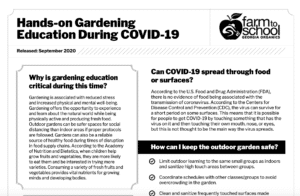

Happy Arbor Day, Georgia!
 Nationally, Americans recognize Arbor Day in April. Georgia celebrates Arbor Day on the third Friday of February each year because this is a better time to plant trees. This year Georgia’s Arbor Day falls on February 19th. By planting in February, trees have time for root growth before the heat and drought of our summer months.
Nationally, Americans recognize Arbor Day in April. Georgia celebrates Arbor Day on the third Friday of February each year because this is a better time to plant trees. This year Georgia’s Arbor Day falls on February 19th. By planting in February, trees have time for root growth before the heat and drought of our summer months.
Have you considered fruit trees in your community garden? They add a nice backdrop to your garden, can provide a bit of shade during the very hot summer days, and produce fruit for the gardeners.
Be warned, however, that they can be a lot of work. There are a few points to think about before you decide if you want to plant fruit trees in your community garden:
1. You need the right location. When planning fruit trees for the limited space of a community garden, location is the key. Fruit trees require at least six hours of sunlight to be healthy and to produce fruit. Eight to ten hours of sun is optimal. Also, although the shade a fruit tree provides during August may be welcome, you do not want to create unwanted shade on vegetable plots. Dwarf trees may be an answer here. They are also easier to care for than full sized trees. Remember what you plant will get bigger and taller!
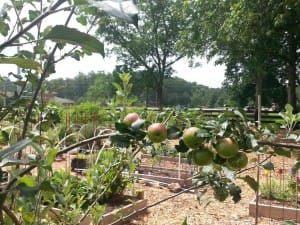
2. Maintenance. Realize that fruit trees involve more care than vegetables. They may need to be properly pruned, thinned and fertilized regularly. Apples, peaches, and plums will get diseases and insects in Georgia. Someone will need to volunteer to address this by the use of pesticides, fungicides, and traps. If your garden does not allow any pesticides, growing traditional fruit trees such as apples, pears, and peaches may not be for you. Instead, you may want to try other fruit crops such as blueberries and figs. David Berle and Robert Westerfield’s publication Growing Fruits: Community and School Gardens does a great job of discussing these issues.
3. You may need more than one. Many trees need cross-pollination to produce fruit. You will need at least two different apple trees and depending on the variety you might need two different pear or plum trees. Most peach trees self-pollinate so one will still produce fruit.
If these points haven’t scared you off, check out these publications:
Home Garden Pears by Gerard Krewer and Paul Bertrand
Home Garden Apples by David Lockwood
Another way to think about trees is their value to pollinators. There are many “trees for bees” and other pollinators that do well in our Georgia ecosystems. Did you know that several trees are actually larval host plants for butterflies? Selecting Trees and Shrubs as Resources for Pollinators is a wonderful resource for Georgia gardeners.
Contact your UGA Extension agent for more information on planting trees.
Happy Arbor Day!
The Great Georgia Pollinator Podcast
The Great Georgia Pollinator Podcast has launched! University of Georgia’s Becky Griffin is the host and she designed the podcast to correspond to the Great Georgia Pollinator Census.
If you are interested in pollinating insects, habitat, and research, this is the podcast for you. It can be found on Spotify, Apple Podcasts, and Anchor. Each episode is 20-30 minutes so it is easy to listen to at your office desk, during lunch, or on your commute.
The first episode explores the Connect to Protect pollinator certification program with Lauren Muller. As with other social media platforms, this podcast will concentrate on pollinator habitat during the first part of the year and transition into more insect topics as we approach warmer weather. Won’t you join us?
Using Seed Catalogs In the Classroom
The seed catalogs keep arriving. In my household that is cause for excitement. I save them until I have time to properly enjoy looking through them. What do you do with your seed catalogs after you have looked through them and placed your orders? If you throw them into the recycling bin you are missing out as these gems are full of useful information.
If you are a school gardener, or a community gardener that works with youth, the seed catalogs can be used throughout the year! To start with you can laminate the beautiful photos to use as plant markers.
You can use the information provided in the catalog for lessons:
Seed spacing guides can be used for students to create a garden bed design.
Days to harvest information can be used for students to determine the planting dates of their garden design so that all the produce is ready at the same time.
Seed package cost can be used to calculate the total cost of the garden design.
All of this information can be used to determine how much produce can be grown per square foot (inch, meter).
Marketing plans can be created to sell resulting produce at a Farmers Market. How much money can be made given the input costs?
Aspiring artists can design artistic seed packets using the information given.
English classes can pick vegetables and re-write the plant descriptions.
Of couse, students can look through the catalog and pick a vegetable they have never tried before and make a plan to grow it.
Happy browsing!
Seed Catalogs Are Arriving!
It is a great time of year for gardeners. The seed catalogs are arriving and our gardeners are as beautiful as our imagination, and the photos from the catalogs. These catalogs are mesmerizing. The photos are works of art and the vegetable descriptions are literature. Many of them contain information on vegetable history, how to plant, and how to use the produce. Flowers are described by height, scent, color and attractiveness to pollinators. And, oh so many new varieties to try!
Garden Catalog Tips
Robert Westerfield, UGA vegetable specialist, gives us some tips on navigating our way through these catalogs and all of the vegetable choices.
Tip #1 If you are gardening for high yields or dependable results, use recommended varieties for your area. UGA’s Vegetable Planting Chart has a list of varieties that have proven to do well in Georgia. These are the least risky choices.
Tip #2 When trying a new vegetable variety order only a small quantity to start. Experimenting is one of the great pleasures of the garden. Succeed or fail, it is fun to try. Just don’t over-invest in seeds until you know how they will perform in your garden.
Tip #3 Remember the vegetables you grew up with may not necessarily be the best ones to plant now. There are many improved hybrid varieties that can hold up to our disease and heat issues. A good example is Silver Queen corn. While popular, it is definitely not the best variety to grow in Georgia. There are many new corn hybrids on the market that are much sweeter and maintain their sweetness longer when stored.
Hopefully, these tips will be a helpful guide as you enjoy making your 2021 garden seed selections. One bonus tip especially for school gardeners – the photos in the catalogs can be laminated and used as plant markers or in gardening lessons.
Happy Reading
Garlic Planting Step-by-Step
Late October is prime garlic planting time for the Atlanta area. The bulbs overwinter in the garden and are harvested in the spring. If you don’t traditionally plant winter crops, garlic is a great one to start with.
Garlic (Allium sativum) is a member of the onion family. Its use dates back to 4000 BC in central Asia. According to Seed Savers Exchange garlic was found in King Tut’s tomb, eaten by Olympic athletes, and used as medicine by Hippocrates. There are over 600 types of garlic grown all over the world. Why not give it a try?
There are two basic categories of garlic: hard-necked and soft-necked. Georgians have better luck growing soft-necked garlic as the hard-necked ones require the long, cold winters and long, cool springs of more northern climates. There are three types of soft-necked garlic that grow well in Georgia: silverskin, artichoke, and elephant garlic (actually a type of leek). Recommended cultivars include Inchelium Red, California Early, and Chet’s Italian – all artichoke types. If you want to try the silverskin type consider Mild French.
Garlic Production for the Gardener is a useful publication on the types of garlic, planting, and harvesting. Planting involves just a few simple steps. Your local UGA Extension Agent will also have information to help you get started.
Step 1: Start with prepared soil. Garlic needs rich, loose soil with a pH of about 6.5. Make sure you add some compost after removing the summer plants; don’t just pull up spent plants and put the garlic in the ground. If soil test results indicate adding fertilizer, do so. Garlic is a medium-heavy feeder. Nitrogen can be incorporated in the soil before planting, either with traditional fertilizers or bone meal. Side dress in the spring when shoots are 4 to 6 inches tall. Hold off on nitrogen after April 1st because you want to encourage bulb formation not leaf growth.
Step 2: Pull the garlic head apart just before you plant. Use the larger bulbs for best results. Also, leave the skin on the bulb.
Step 3: Plant the bulbs about 2 inches deep with the pointed end up. Space them about 6-8 inches apart.
Step 4: Be generous with mulch. A generous amount of mulch helps keep the soil moisture and soil temperatures even.
Tops may show through the mulch by the end of October and the bulbs should be well rooted by November. Since October is one of our driest months of the year, irrigation is important at planting. Watering may be needed in early spring, but be careful not to over water. Stop irrigation once the tops begin to dry and fall over.
Garlic should be ready for harvest between mid-May to mid-July. Look for the tops drying and following over. When 1/2 of the tops are in this condition it is time to harvest. Don’t leave the bulbs in the ground too long or they may rot. Be very careful when harvesting not to damage your crop.
Allow the heads to dry in a warm, dry place. Keep them out of direct sunlight. After the garlic has dried store it in a cool, dry, dark place to keep it fresh as long as possible. Garlic braiding is a unique way of storage.
A community garden plot can yield a year’s worth of garlic so you’ll be able to enjoy those delicious Italian meals all year long. Garlic bread, calazones, tomato sauce, garlic chicken….
Happy Gardening and Mangiate bene!
Image
Get the Garden Blog Delivered to Your Inbox!

